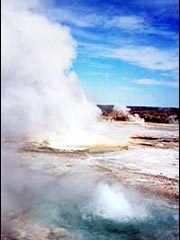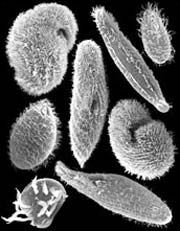Articles and reports from the Life Sciences and chemistry area deal with applied and basic research into modern biology, chemistry and human medicine.
Valuable information can be found on a range of life sciences fields including bacteriology, biochemistry, bionics, bioinformatics, biophysics, biotechnology, genetics, geobotany, human biology, marine biology, microbiology, molecular biology, cellular biology, zoology, bioinorganic chemistry, microchemistry and environmental chemistry.

Nanotechnology is an emerging range of technologies in which medicine and engineering meet physics and chemistry. Nanotechnology supporters claim that the machines and materials it may produce will mean faster computers, less pollution and cheaper energy, and longer and healthier lives.
Critics, however – from Prince Charles to Jurassic Park author Michael Crichton – fear that nanomachines could run amok and turn the surface of the Earth into an uninhabitable morass. Environmentalists

A study of microbes that thrive in hot, acidic conditions has overturned a long-held view that species of micro-organisms do not differ by geographic location like other forms of life. The research by the University of Cincinnati and the University of California-Berkeley has just been published online by the journal Science.
When it comes to plant life and animal life, a species usually shows genetic differences in different parts of the world. For the tiny form of life known as micro-org

Some thirty million species now live on Earth, but their spatial distribution is highly uneven. Biologists since Darwin have been asking why. Now, scientists funded by the National Science Foundation (NSF), have discovered part of the answer: how plant and animal communities originally assembled is a predictor of future biodiversity and ecosystem productivity.
“Despite its importance, species diversity has proven difficult to understand, in large part because multiple processes operating at

Scientists at the MPI-CBG in Dresden and EMBL in Heidelberg map forces that help cells divide
“Cells obey the laws of physics and chemistry,” begins a famous biology textbook, and one of the main goals of molecular biology is to link the properties of single molecules to the behavior of cells and the lives of organisms. So it is probably no surprise that an important new discovery about the physical forces that underlie cell division comes from a physics student-turned biologist, usi

Researchers have discovered a novel class of compounds that affects the cell’s garbage disposal system which degrades proteins and opens a window for understanding a vital cell function as well as for treating heart disease and cancer.
The distinctive mechanisms of these compounds are reported in the July 29 issue of Biochemistry and online earlier this month by Dr. Michael Simons, professor of medicine and of pharmacology and toxicology at Dartmouth Medical School and head of ca

Professor Lance Lanyon, Principal of The Royal Veterinary College, Karla Lee, Helen Jessop, Rosemary Suswillo, Gul Zaman from the Department of Basic Sciences at The Royal Veterinary College have shown in their research that the Estrogen Receptor has a fundamental role in bone cells by adjusting the bone architecture to match the loads individuals place on them. Their paper is published in the latest edition of Nature.
The strain imposed by mechanical loading on bone tissue normally stimulat